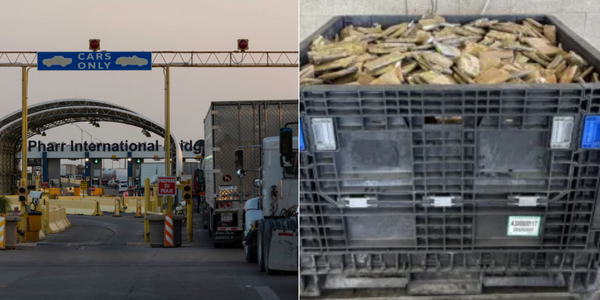
Asian shares traded mixed Tuesday, echoing Wall Street trading, where gains for oil-and-gas producers helped offset drops for Nvidia and other Big Tech companies.
Japan's benchmark Nikkei 225 slipped 1.8% in morning trading to 38,469.58, reopening after a holiday on Monday. Australia's S&P/ASX 200 added 0.4% to 8,220.50. South Korea's Kospi was little changed, inching down less than 0.1% to 2,489.33. Hong Kong's Hang Seng jumped 1.5% to 19,163.92, while the Shanghai Composite surged 2.2% to 3,229.99.
“After a holiday break, Japan’s markets are playing catch-up following last week’s market sell-off,” said Yeap Jun Rong, market strategist at IG.
Japan’s Finance Ministry reported that the current account, a measure of Japan’s foreign exchanges in goods, services and investments, rose to 3.4 trillion yen ($21 billion) in November, up 54.5% from the same month the previous year.
On Wall Street, the S&P 500 rose 0.2% after erasing an earlier fall of 0.9%. The Dow Jones Industrial Average climbed 358 points, or 0.9%, while the weakness for Big Tech stocks dragged the Nasdaq composite to a loss of 0.4%.
Stocks have been under pressure the last month, and the S&P 500 is coming off its fourth losing week in the last five as traders cull expectations for how much relief the Federal Reserve may deliver this year through lower interest rates.
Such cuts would give the economy a boost, and the U.S. stock market ran to repeated records last year on the assumption that more are coming after the Fed began lowering rates in September. But inflation has remained above the Fed’s 2% target, and recent reports have suggested a still-solid U.S. economy doesn’t need much help. Questions are growing about whether the Fed will deliver even a single cut in 2025.
High rates put downward pressure on prices for all kinds of investments, and those seen as expensive can feel the stiffest punches. Nvidia fell 2% and was the heaviest weight on the S&P 500, though that represents just a smidgen of its huge gains made in recent years. The chip company’s stock had nearly quintupled over the last three years amid the frenzy around artificial-intelligence technology.
Apple’s 1% slip and Meta Platforms’ fall of 1.2% were also among the heaviest weights on the market. Because they’re two of the largest companies on Wall Street, their moves pack more punch on the S&P 500 than other stocks.
Moderna tumbled 16.8% for the largest loss in the S&P 500 after giving a forecast for revenue this upcoming year that fell short of analysts’ expectations. The vaccine maker, which is seeing a slowdown in COVID-related sales, is accelerating a cost-cutting program.
Macy’s fell 8.1% after saying it will likely report revenue for the last three months of 2024 that’s at or slightly below the low end of the forecasted range it had earlier given.
Edison International fell another 11.9% as wildfires continue to burn in the territory of its Southern California Edison utility. The utility has said fire agencies are investigating whether its equipment was involved in the ignition of the Hurst fire.
On the winning side of Wall Street were oil-and-gas companies after the price of oil climbed. On Monday, a barrel of benchmark U.S. crude rose 2.9% to $78.82, while Brent crude climbed 1.6% to $81.01. The Biden administration said Friday it’s expanding sanctions against Russia’s energy industry.
Exxon Mobil gained 2.6%, and Valero Energy jumped 4.9%.
Early Tuesday, benchmark U.S. crude lost 37 cents to $78.45 a barrel. Brent crude, the international standard, fell 43 cents to $80.58 a barrel.
Shares of U.S. Steel rallied 6.1% after the Biden administration pushed back to June the deadline it imposed for the Pittsburgh-based company to unwind its proposed acquisition by Japan’s Nippon Steel.
Intra-Cellular Therapies soared 34.1% after Johnson & Johnson said it would buy the biopharmaceutical company and its treatment for bipolar I and II depression for $132 per share in cash. Johnson & Johnson rose 1.7%.
All told, the S&P 500 added 9.18 points to 5,836.22. The Dow Jones Industrial Average rose 358.67 to 42,297.12, and the Nasdaq composite slipped 73.53 to 19,088.10.
In the bond market, which has been dictating much of Wall Street’s action lately, Treasury yields ticked higher.
The yield on the 10-year Treasury rose to 4.78% from 4.76% late Friday. It’s been climbing relentlessly over the last month, and it was below 3.65% just in September.
If Treasury yields continue to rise, either stock prices need to fall or companies need to produce bigger profit growth to make up for it.
In currency trading, the U.S. dollar edged up to 157.70 Japanese yen from 157.26 yen. The euro cost $1.0255, down from $1.0274.
___
AP Business Writer Stan Choe contributed.







